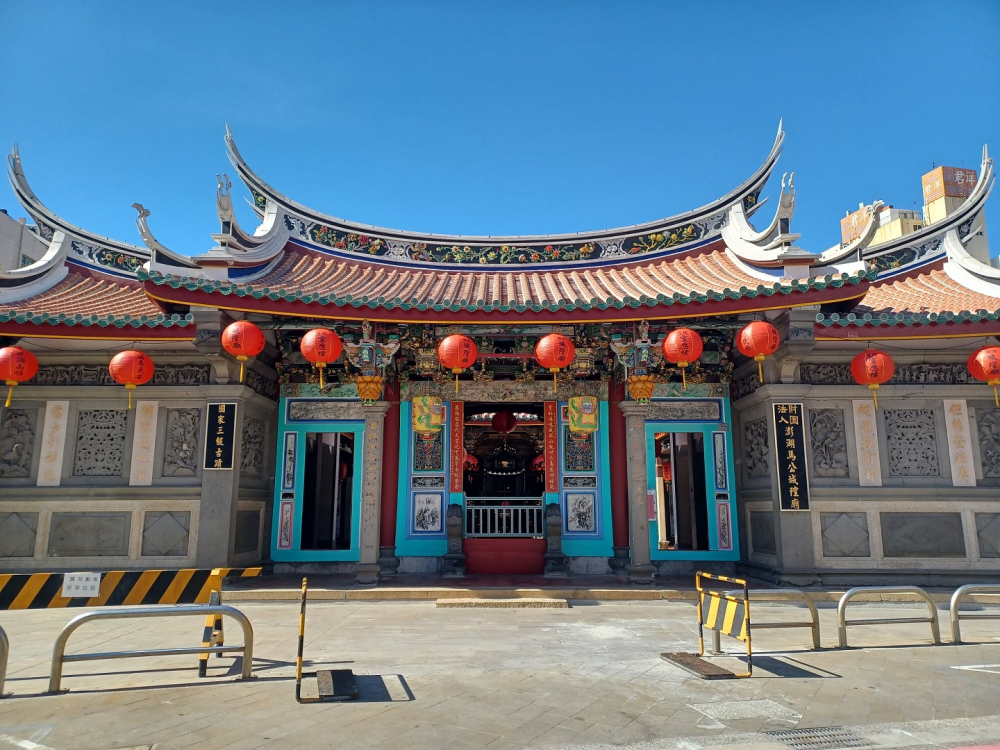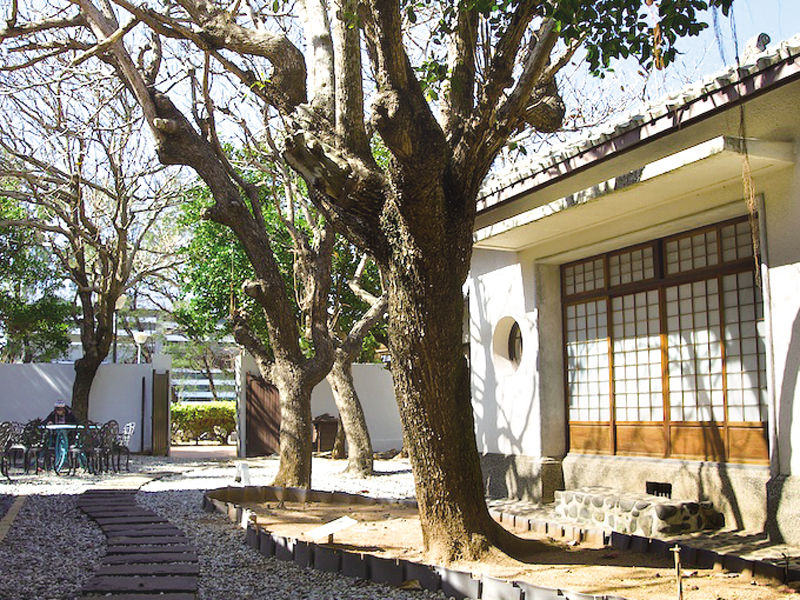Magong City God Temple
Attractions
Currently, there are two City God Temples in Penghu: the Wen'ao City God Temple and the Magong City God Temple, which is quite unique in Taiwan.The Magong City God Temple is part of the Hepenggong Temple(閤澎公廟, an official temple founded by the government.) It plays a crucial role in the annual celebrations of the 7th month of the lunar calendar, where it marks the beginning of the festivities, with other temples following suit. This is reflected in the local saying, "When the City God Temple starts, Guanyinting finishes."
In the 44th year of the Qianlong reign (1779), Hsieh Weichi, the judge of the Penghu Maritime Defense and Granary Office(澎湖海防糧捕廳), found the Wen'ao City God Temple, located beside the office, to be too small and inadequate for proper reverence. He, along with supervisory scholar Kuo Chihta, led the construction of a new City God Temple at its present location in Magong. A commemorative inscription from that time still remains.
During the Sino-French War in the 11th year of the Guangxu reign (1885), French forces invaded Penghu in February. During the conflict, the Magong City God Temple was believed to have provided divine protection for the people and soldiers, leading to the emperor granting a plaque of honor to the City God Temple and Penghu Tianhou Temple, officially recognizing the City God as the "Lingying Marquis" (靈應侯, or the Marquis of Divine Response), granting him a title equal to that of the City God.
In the 15th year of the Guangxu reign (1889), the Qing government moved the Penghu administrative office to the newly completed Magong City. This made the Magong City God Temple the official governmental temple for the region. The temple is located east of the Magong General's Office and is a highly revered temple in the area, serving not only as a site for official ceremonies but also playing a role in educating and guiding the public.
The temple underwent significant renovations in the 8th year of the Showa era (1933), including raising the roof structure and adding elaborate interior and exterior carvings and paintings.
Further repairs were made in 1982, 1999, and 2022, with the current appearance reflecting these renovations.
The main deity of the Magong City God Temple is the City God, with other deities including the Civil and Military Judges, the Four Holy Generals (四大吏), Hu Yeh (Tiger God), Lady Linshui and the Goddess of Childbirth. Additionally, the temple houses six divine bureaus in the east and west wings of the courtyard: the Bureau of Wealth (註祿司), the Bureau of Yin and Yang (陰陽司), the Bureau of Good Deeds (褒善司), the Bureau of Longevity (註壽司), the Bureau of Retribution (速報司) and the Bureau of Punishment (罰惡司). Other revered figures include the 7th Master & 8th Master, as well as various other spiritual enforcers.
During the Guangxu era, when the French army invaded Penghu, local residents fled north to Dingshan (Baisha Island) to seek refuge. However, they were attacked by French artillery fire along the way. With no other options, they silently prayed to the City God for protection. Miraculously, a sudden heavy downpour ensued, rendering the French shells unable to detonate, allowing the people to escape unharmed. After the Sino-French War, moved by the miraculous manifestations of the City God Temple, the Qing court bestowed the honorary title of "Lingying Marquis" (靈應侯, or the Marquis of Divine Response). A plaque inscribed with "Imperially Bestowed Lingying Marquis" hangs in the central courtyard.In the rear hall, a plaque granted by Emperor Guangxu reads "Merit in Defense" (功存捍衛).The temple features numerous couplets. The wooden couplet in the main hall's shrine reads: "On that day, you acted recklessly, defying reason and morality—this is the consequence you brought upon yourself. Today, regret comes too late, shackled and bound—you have only yourself to blame." The couplet at the entrance of the Sanchuan Hall(三川殿) warns: "As you enter the temple, beware of missteps; If you wish to return home, repent before it's too late." Above the entrance, two plaques read "You Have Arrived" and "Too Late to Repent," accompanied by an 11-bar abacus featuring two beads on top and five below, symbolizing deep moral teachings and a reminder of karmic accountability.
On the left wall of the main hall, two stone inscriptions commemorate the temple's history: The Penghu City God Temple Reconstruction Stele from the 44th year of the Qianlong era (1779) and the City God Temple Renovation Stele from the 12th year of the Guangxu era (1886). Due to age and incense smoke, the inscriptions had become difficult to read, but the temple has since restored and repainted them, making the historical records legible once more and further highlighting the long history of the City God Temple.
A unique tradition at Magong City God Temple is the "Fortune Renewal(補運)" ritual, held from the evening of the 6th day to the morning of the 7th day of the 6th lunar month. Devotees offer a large bowl of sweet glutinous rice with a number of red-dyed boiled eggs corresponding to their household members, surrounded by "Fortune Renewal Coins(補命錢)." After praying for the City God's blessing, they peel the eggs—symbolizing the shedding of misfortune and the renewal of good fortune. The eggs are sprinkled with temple incense ash and on the way home, participants must remain silent. Once home, the peeled eggs are shared among family members and consumed, ensuring a year of peace and protection from misfortune.
The Magong City God Temple has extended its spiritual presence to Qimei (七美).During the 8th year of the Taisho era (1919), the Magong City God was taken on an inspection tour to Bajhao Island (八罩島, now Wang'an Township). Devotees from Dayu (now Qimei Township) earnestly invited the City God to visit. Upon arriving, it was discovered that Dayu had excessive yin energy, leading to poor security and unrest. The City God petitioned the Jade Emperor, who decreed that Gongfu City God(龔府城隍) be stationed there to restore order. Initially, divine instructions were conveyed through spiritual writing, but by the 10th year of the Taisho era (1921), the temple began using spirit mediums. In the 12th year of the Taisho era (1923), the temple began its spiritual reforms, including 1) advising against a 11-story stone pagoda with a jar-shaped top, reducing it by two levels and 2) conducting multiple patrol circuits to cleanse the area of spiritual disturbances. After 90 years, on April 27 (lunar calendar), 2008, Qimei City God Temple (Senfa Hall(森法殿)) and other temples in Qimei Township returned to Magong City God Temple to pay homage, fulfilling the long-held wish of the devotees.
Source: 2021 Penghu County Cultural Heritage Manual, Press Releases of the Penghu County Government
In the 44th year of the Qianlong reign (1779), Hsieh Weichi, the judge of the Penghu Maritime Defense and Granary Office(澎湖海防糧捕廳), found the Wen'ao City God Temple, located beside the office, to be too small and inadequate for proper reverence. He, along with supervisory scholar Kuo Chihta, led the construction of a new City God Temple at its present location in Magong. A commemorative inscription from that time still remains.
During the Sino-French War in the 11th year of the Guangxu reign (1885), French forces invaded Penghu in February. During the conflict, the Magong City God Temple was believed to have provided divine protection for the people and soldiers, leading to the emperor granting a plaque of honor to the City God Temple and Penghu Tianhou Temple, officially recognizing the City God as the "Lingying Marquis" (靈應侯, or the Marquis of Divine Response), granting him a title equal to that of the City God.
In the 15th year of the Guangxu reign (1889), the Qing government moved the Penghu administrative office to the newly completed Magong City. This made the Magong City God Temple the official governmental temple for the region. The temple is located east of the Magong General's Office and is a highly revered temple in the area, serving not only as a site for official ceremonies but also playing a role in educating and guiding the public.
The temple underwent significant renovations in the 8th year of the Showa era (1933), including raising the roof structure and adding elaborate interior and exterior carvings and paintings.
Further repairs were made in 1982, 1999, and 2022, with the current appearance reflecting these renovations.
The main deity of the Magong City God Temple is the City God, with other deities including the Civil and Military Judges, the Four Holy Generals (四大吏), Hu Yeh (Tiger God), Lady Linshui and the Goddess of Childbirth. Additionally, the temple houses six divine bureaus in the east and west wings of the courtyard: the Bureau of Wealth (註祿司), the Bureau of Yin and Yang (陰陽司), the Bureau of Good Deeds (褒善司), the Bureau of Longevity (註壽司), the Bureau of Retribution (速報司) and the Bureau of Punishment (罰惡司). Other revered figures include the 7th Master & 8th Master, as well as various other spiritual enforcers.
During the Guangxu era, when the French army invaded Penghu, local residents fled north to Dingshan (Baisha Island) to seek refuge. However, they were attacked by French artillery fire along the way. With no other options, they silently prayed to the City God for protection. Miraculously, a sudden heavy downpour ensued, rendering the French shells unable to detonate, allowing the people to escape unharmed. After the Sino-French War, moved by the miraculous manifestations of the City God Temple, the Qing court bestowed the honorary title of "Lingying Marquis" (靈應侯, or the Marquis of Divine Response). A plaque inscribed with "Imperially Bestowed Lingying Marquis" hangs in the central courtyard.In the rear hall, a plaque granted by Emperor Guangxu reads "Merit in Defense" (功存捍衛).The temple features numerous couplets. The wooden couplet in the main hall's shrine reads: "On that day, you acted recklessly, defying reason and morality—this is the consequence you brought upon yourself. Today, regret comes too late, shackled and bound—you have only yourself to blame." The couplet at the entrance of the Sanchuan Hall(三川殿) warns: "As you enter the temple, beware of missteps; If you wish to return home, repent before it's too late." Above the entrance, two plaques read "You Have Arrived" and "Too Late to Repent," accompanied by an 11-bar abacus featuring two beads on top and five below, symbolizing deep moral teachings and a reminder of karmic accountability.
On the left wall of the main hall, two stone inscriptions commemorate the temple's history: The Penghu City God Temple Reconstruction Stele from the 44th year of the Qianlong era (1779) and the City God Temple Renovation Stele from the 12th year of the Guangxu era (1886). Due to age and incense smoke, the inscriptions had become difficult to read, but the temple has since restored and repainted them, making the historical records legible once more and further highlighting the long history of the City God Temple.
A unique tradition at Magong City God Temple is the "Fortune Renewal(補運)" ritual, held from the evening of the 6th day to the morning of the 7th day of the 6th lunar month. Devotees offer a large bowl of sweet glutinous rice with a number of red-dyed boiled eggs corresponding to their household members, surrounded by "Fortune Renewal Coins(補命錢)." After praying for the City God's blessing, they peel the eggs—symbolizing the shedding of misfortune and the renewal of good fortune. The eggs are sprinkled with temple incense ash and on the way home, participants must remain silent. Once home, the peeled eggs are shared among family members and consumed, ensuring a year of peace and protection from misfortune.
The Magong City God Temple has extended its spiritual presence to Qimei (七美).During the 8th year of the Taisho era (1919), the Magong City God was taken on an inspection tour to Bajhao Island (八罩島, now Wang'an Township). Devotees from Dayu (now Qimei Township) earnestly invited the City God to visit. Upon arriving, it was discovered that Dayu had excessive yin energy, leading to poor security and unrest. The City God petitioned the Jade Emperor, who decreed that Gongfu City God(龔府城隍) be stationed there to restore order. Initially, divine instructions were conveyed through spiritual writing, but by the 10th year of the Taisho era (1921), the temple began using spirit mediums. In the 12th year of the Taisho era (1923), the temple began its spiritual reforms, including 1) advising against a 11-story stone pagoda with a jar-shaped top, reducing it by two levels and 2) conducting multiple patrol circuits to cleanse the area of spiritual disturbances. After 90 years, on April 27 (lunar calendar), 2008, Qimei City God Temple (Senfa Hall(森法殿)) and other temples in Qimei Township returned to Magong City God Temple to pay homage, fulfilling the long-held wish of the devotees.
Source: 2021 Penghu County Cultural Heritage Manual, Press Releases of the Penghu County Government
- Phone
- 06-9273724
- Opening Hours
- 05:00~20:00
- Theme Category
- Attractions Cultural Attractions Temples Historical Attractions
Nearby Locations
TOURIST ATTRACTION















